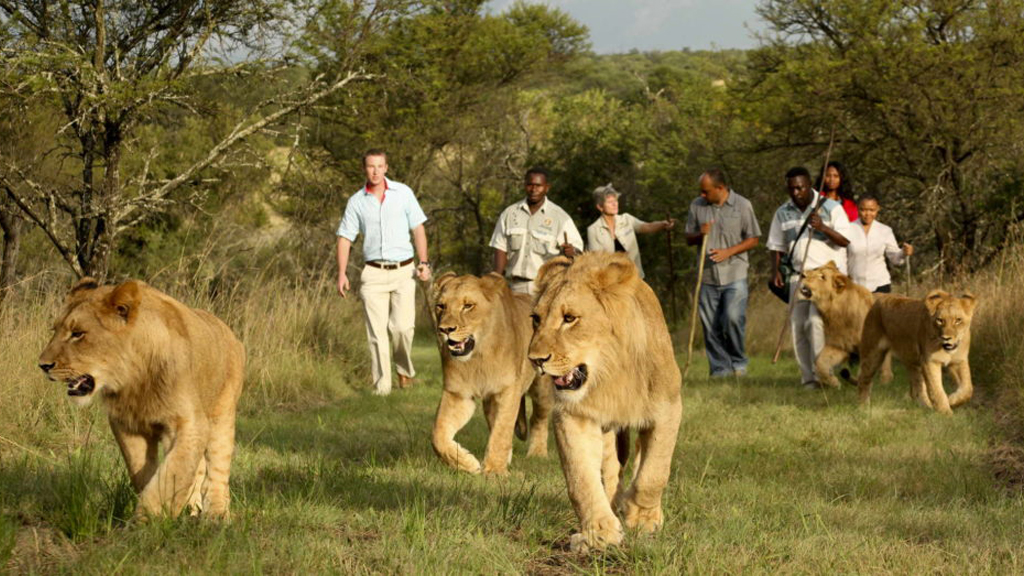How can the money be found to save animals in the 21st century? Non-fungible tokens.
In the woods in South Africa’s northeast, this was done by an NGO from the United States. Since 2017, the charity has been raising money to buy land, take down fences, and clear brush to connect the MunYaWana Conservancy and the iSimangaliso Wetland Park so that elephants, rhinos, and lions can move freely between the two protected areas. WildCards, a South African company that uses blockchain to help protect wildlife, got $30,000 to do this.
In WildCards, animals are shown as unique pieces of digital art, similar to the “Bored Ape” set of NFTs that sold last year for more than $3 million. The Ethereum blockchain’s native currency, ether, can be used to buy and sell WildCards. The person who owns each card is the animal’s guardian, and they pay a small amount each month to the conservation group that protects the animal or species. Since its launch in 2019, the WildCards platform has raised $77,000 (until July 26, 2022) for conservation groups in Kenya, India, and Malaysia from blockchain, cryptocurrency, and NFT fans.
Co-founder Jason Smythe says that WildCards are a fun and creative way for people to show their support for wildlife conservation. Technology gets rid of middlemen who charge fees.
Many people don’t know much about non-fungible tokens (NFTs) or blockchain, the technology that makes them work. However, their uses are being researched, from safe money transfers to storing information about property ownership. The immutability and transparency of the technology could be used to enforce contracts and keep an eye on wildlife trafficking. Blockchain may not be used as much as it could be because it uses a lot of energy and is hard to get to. Because the technology is still new, many people are skeptical about how it can be used.
Smythe acknowledges that there are problems, but he thinks that technology will probably change in the future. “The technology is not ossified yet. It’s like listening to someone talk about what the future of the internet is back in the ’90s,” he says. “The experimentation that is going to happen over the next few decades is going to be interesting.”
Peter Howson, a professor of international development at Northumbria University in the U.K., was first interested in how blockchain technology could be used to help protect the environment. Over time, his doubts have grown.
The carbon impact of the technology is much bigger than any gains in conservation. According to the Cambridge Bitcoin Electricity Consumption Index, bitcoin mining uses 92 terawatt-hours of electricity every year. This is more than Venezuela, Belgium, or Finland. In a video interview with Mongabay, Howson says that using this technology gives legitimacy to the harmful crypto sector. This is not a good way to pay for a change to a greener economy.
Few technocrats and entrepreneurs in the Global North control the technology, which makes people worry about how it will be used to manage, distribute, and use resources in the Global South. Howson says he hasn’t seen blockchain technology help save animals in any way other than to raise money. He adds that most people who are interested in crypto are looking for things to break. “Workers in the community and the environment should come first. Tech comes first.
Daniel Oberhauser agrees that the first step should be to look at the situation on the ground and, if necessary, change the technology. Oberhauser made a prototype using smart contracts, another use of blockchain technology, to make payments for ecosystem services more efficient and clear (PES).
Transactions that meet certain criteria are handled automatically by smart contracts. If the contract calls for payment when the job is done, the payment would be made automatically. This is how Oberhauser’s prototype pays a person or group for doing things to protect the environment.
Because of inefficient financial systems and shady management on the ground, payments don’t always get to the people who need them on time, in full, or at all. Oberhauser’s prototype for Blockchain for Ecosystem Payments used smart contracts to make sure payments were clear. Google Earth Engine was used to keep an eye on the safety of a forest or a species. If these conditions are met, the smart contract will pay out the money. Smart contracts are easy to understand and hard to change.
But the real world made things hard. Who will get the rewards? How can people in the Global South get access to technology that they can’t use? Oberhauser’s 2019 research, published in the book Frontiers in Blockchain, said that the technology’s inaccessibility would require “strong dependence on trusted intermediates.” This goes against the idea that blockchain technology is decentralized. No one ever used the prototype.
Nothing has changed since Oberhauser wrote his article. He talks a lot about how government and policy should work with technology. “People who have an understanding of the technology are usually engineers or entrepreneurs from the West who usually have no idea of the governance and natural resource management on the ground,” Oberhauser tells Mongabay in a video interview. “There is still a gap between people who are knowledgeable in both those regards.”
Oberhauser agrees with Smythe of WildCards that the tech needs more testing before it can be used to protect animals. But that’s also hard. If something goes wrong with conservation efforts, years of work could be lost.
Howson says that when conservation efforts don’t seem to be working, many people think they are a scam. “Eventually you are going to run out of people who trust you.”
The post Wildlife conservationists are divided by the blockchain technology appeared first on NFT News Pro.
